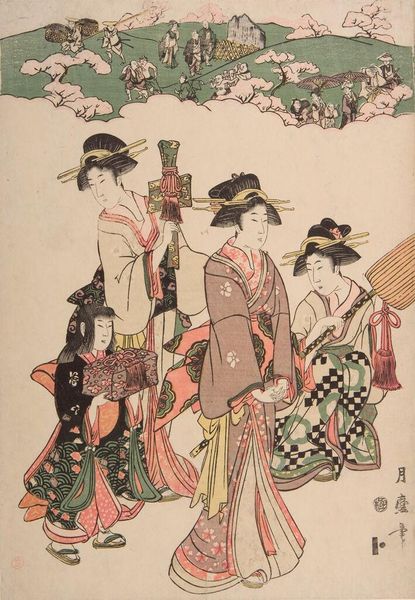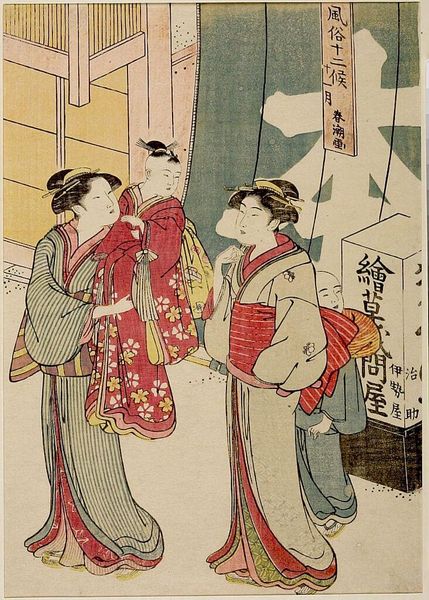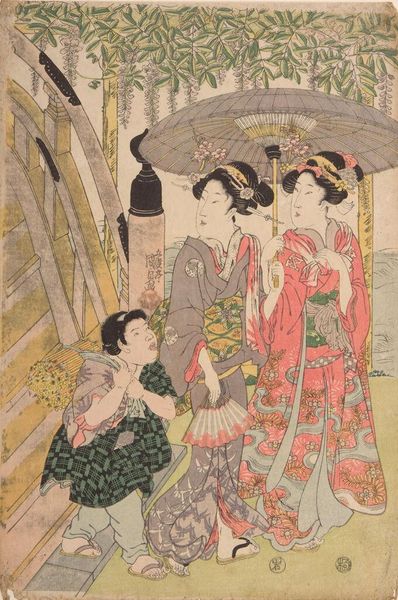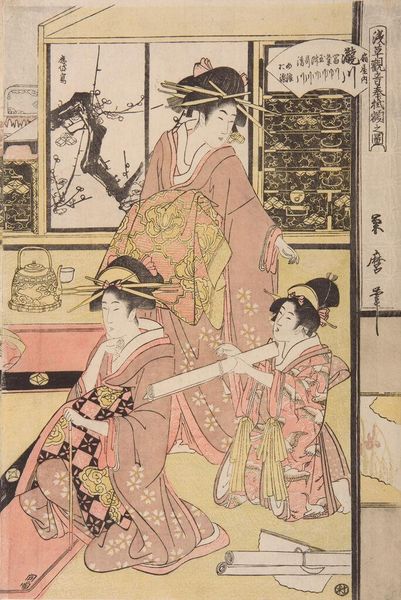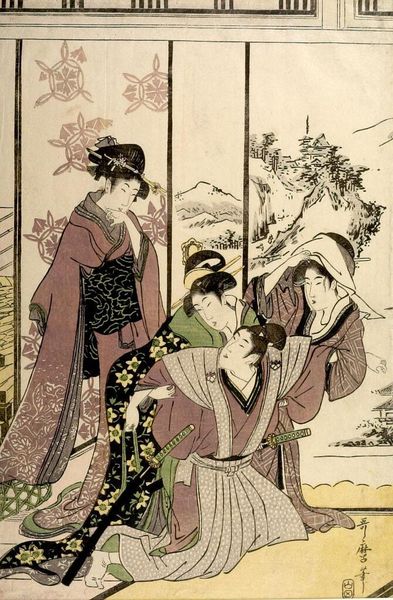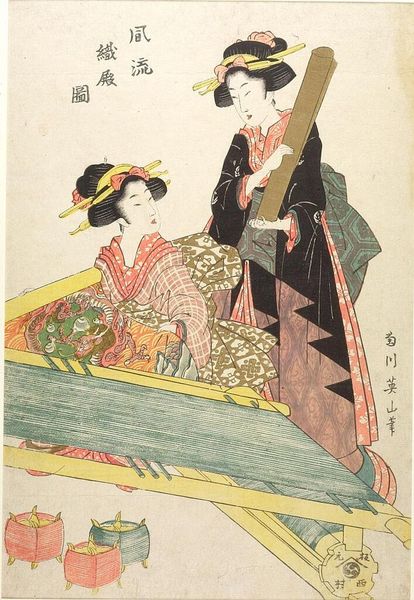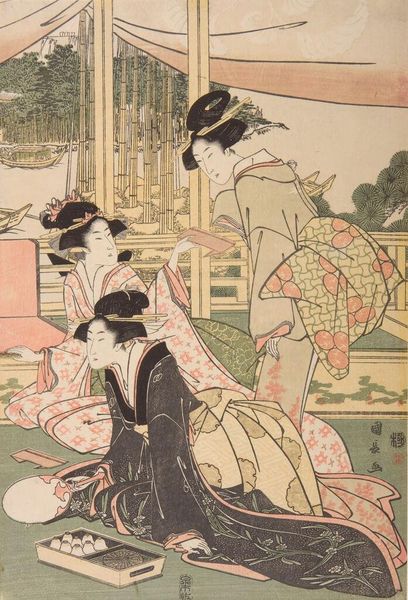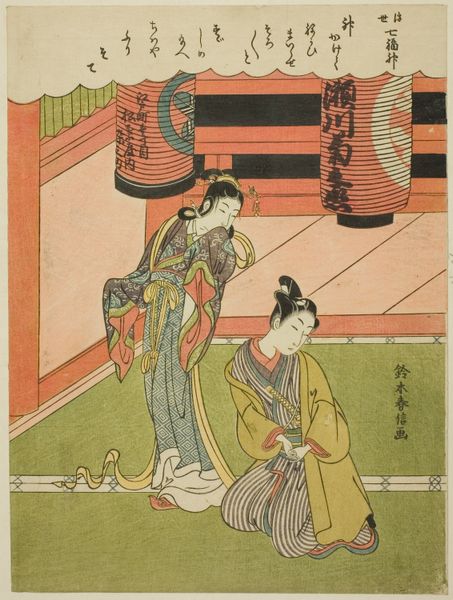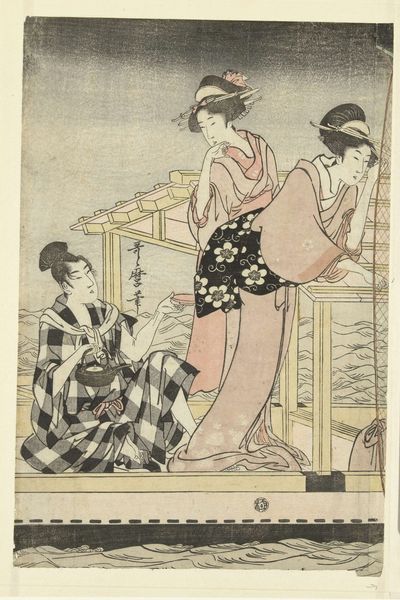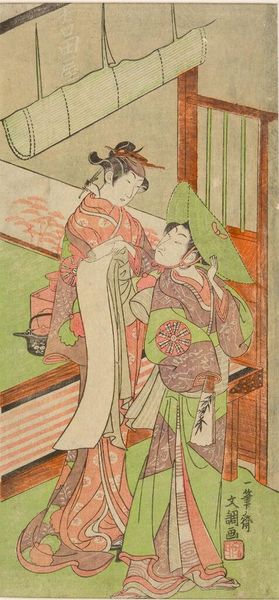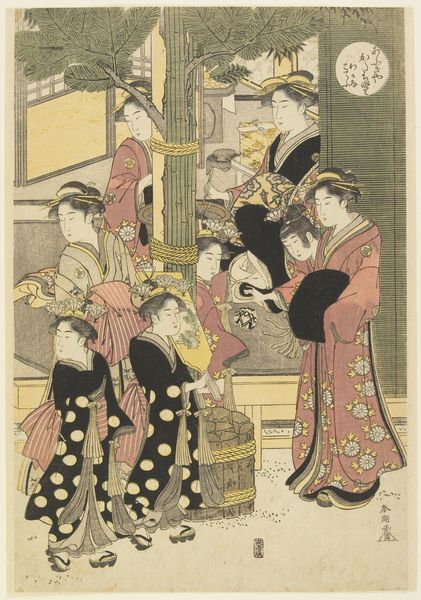
HanaÅgiya of the Ågiya, with kamuro Yoshino and Tatsuta (Ågiya uchi HanaÅgi, Yoshino, Tatsuta) late 18th century-early 19th century"
0:00
0:00
Dimensions: Paper: H. 25.2 cm x W. 18.9 cm (9 15/16 x 7 7/16 in.)
Copyright: CC0 1.0
Editor: Here we have Chōbunsai Eishi's woodblock print, "Hanaōgiya of the Ōgiya, with kamuro Yoshino and Tatsuta," from the late Edo period. The figures seem so poised and still. What's your read on this piece? Curator: This print offers a glimpse into the complex social structures of the Edo period pleasure quarters. Consider how the artist presents these women – their elaborate dress, the interior setting – it all reinforces notions of idealized beauty and status, while also obscuring the realities of their lives. What does their arrangement tell us about power dynamics? Editor: So, their positioning isn't just aesthetic, but also a commentary on their roles? Curator: Precisely. The 'kamuro,' the young attendant, looks upward, perhaps signifying her aspirations. The courtesans themselves are carefully arranged, inviting the male gaze, yet also subtly withholding themselves. It's a negotiation, isn't it? Editor: I see, it’s a constructed image, reflecting social expectations but perhaps hinting at individual agency too. Thanks for the insights! Curator: Absolutely. It highlights the intersection of art, commerce, and the female experience in a specific historical context.
Comments
No comments
Be the first to comment and join the conversation on the ultimate creative platform.

